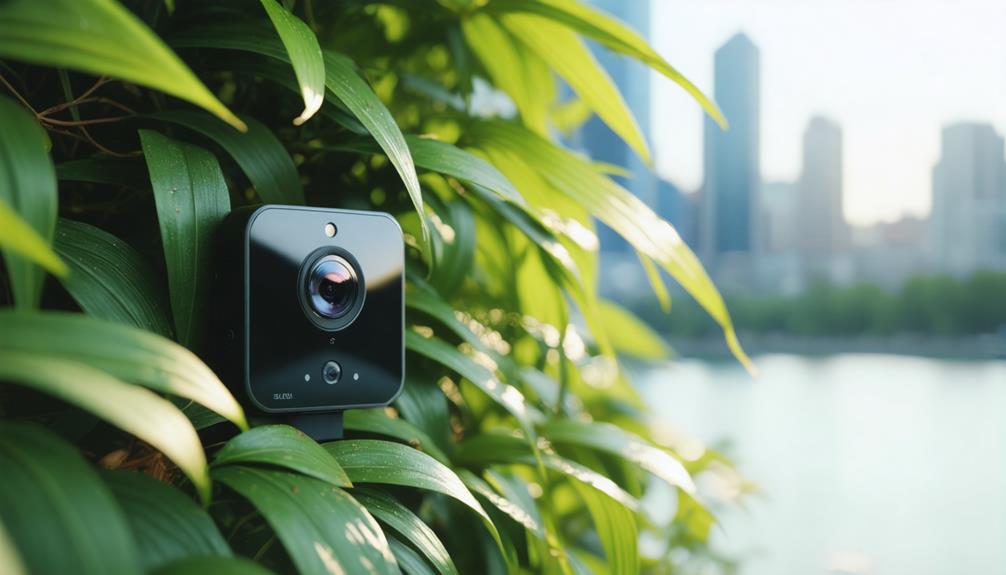
Brainstorm Security Shop

For Orders Over $199

On Any Of Our Products

Details On Refund Page
As you consider the safety of your school, have you thought about the role motion detection cameras can play in enhancing security? These systems aren’t just about catching intruders; they’re about creating a vigilant environment where students and educators can thrive without worry. By integrating motion detection technology, you’re taking a proactive step towards preventing incidents before they escalate. But, how do these systems blend with the daily dynamics of school life, and what are the implications for privacy and personal freedom within educational settings? Let’s explore how these technologies strike a balance between security and ethics.
One often encounters motion detection technology in everyday life, from automatic doors at supermarkets to security systems in homes.
But have you ever wondered how these systems decide when to react? It’s all about the clever interplay between various sensor types and detection algorithms.
You’re probably familiar with a few sensor types without even realizing it. Infrared sensors detect heat emitted by moving objects, while microwave sensors send out pulses that bounce back to detect movement.
Ultrasonic sensors operate similarly but use sound waves instead of radio waves. Each type has its strengths and is chosen based on the environment and the specific needs of the system.
Detection algorithms, on the other hand, are the brains behind the operation. They process the data collected by sensors to determine whether there’s movement that warrants a reaction.
These algorithms vary in complexity. Some simply detect any change in the environment, while more advanced ones analyze patterns of movement to reduce false alarms, such as a pet moving in your home compared to a human intruder.
Understanding these components helps you appreciate the sophistication behind what might seem like straightforward technology.
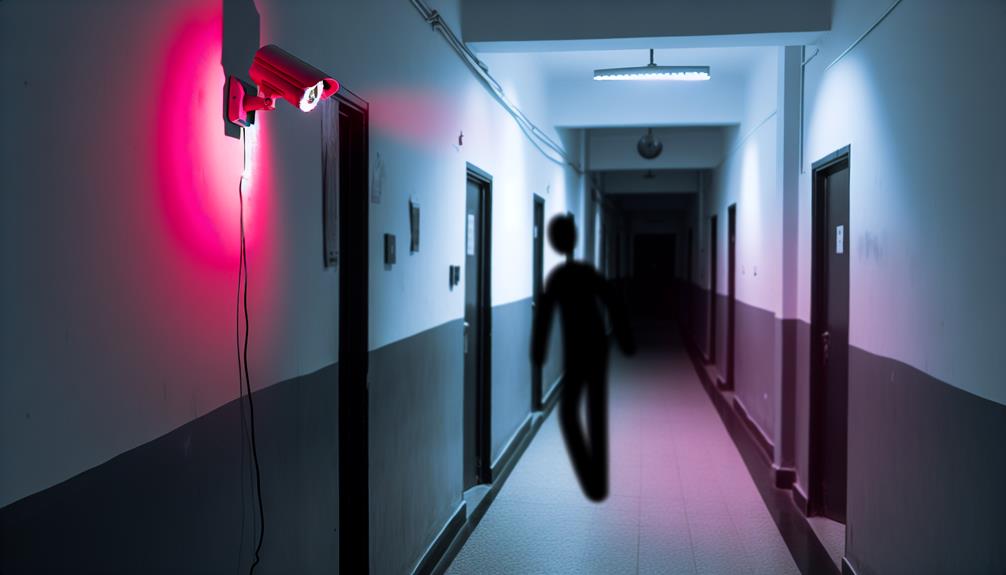
You’ll notice that implementing motion detection cameras significantly enhances security measures at your school.
They’re vital in monitoring unauthorized access, ensuring that only permitted individuals enter the premises.
Additionally, these systems support a safer learning environment, allowing students and staff to focus on education without worry.
Installing motion detection cameras in schools significantly bolsters security by providing real-time surveillance and instant alerts to onsite security personnel.
You’ll find that these systems aren’t just about recording events; they’re about providing actionable intelligence to enhance the safety of students and staff.
With real-time alerts, you’re not waiting for a report after the fact. Instead, you receive immediate notifications if any unusual activity is detected. This means you can respond swiftly to incidents, potentially preventing escalation.
Additionally, these alerts can be configured to go directly to your mobile device, ensuring that you’re informed no matter where you’re on campus.
Here’s how this technology makes a difference:
Installing motion detection cameras at school entrances and restricted areas expertly monitors unauthorized access, ensuring only approved individuals can enter sensitive zones. With this technology, you’re not just installing a security measure; you’re activating a sophisticated access control system that filters who gets to roam your halls.
It’s about keeping students and staff safe from potential threats.
Imagine you’re handling the daily bustle of a busy school environment. These cameras serve as your eyes, constantly scanning for any sign of intrusion. They use advanced threat detection algorithms to alert you instantly if someone who shouldn’t be there tries slipping through.
This isn’t just about catching intruders after the fact; it’s about stopping them before they even start their mischief.
You’ll find this proactive approach incredibly reassuring. Whether it’s during school hours or after, you know that the premises are watched over. Unauthorized access attempts are quickly identified and handled, reducing the risk of any harmful incidents.
Creating a safe learning environment is crucial for academic success, and motion detection cameras play a significant role in this effort. By implementing these devices, you’re not just installing a security system; you’re building a foundation of safety that enhances the educational experience for everyone involved.
Here’s how these cameras make a significant difference:
As you consider the security of your educational institution, remember that motion detection cameras aren’t just tools; they’re part of a strategic approach to ensure a secure and supportive learning atmosphere.
When setting up motion detection cameras in schools, it’s crucial to start by selecting appropriate locations for installation. You’ll need to consider camera placement carefully to ensure maximum coverage while maintaining the privacy of students and staff. Ideal spots often include main entrances, hallways, and near valuable assets.
However, keep in mind that installation challenges can arise, particularly in older buildings with complex layouts.
You’ll also want to ensure that the cameras are positioned at the right height—too high and you might miss crucial details, too low and they could be tampered with. It’s essential to involve your school’s security team in this process as they can provide insights based on past incidents and current security concerns.
Once locations are determined, you’ll move on to the actual installation. This involves mounting the cameras, managing wires, and ensuring all components are securely connected.
Don’t forget to test each camera’s field of view and adjust angles as needed. Finally, connect the system to a network that allows for secure data transmission and easy access for authorized personnel.
With careful planning and attention to detail, you can enhance your school’s security effectively and discreetly.
When you compare motion detection cameras to other security systems, you’ll want to consider several key aspects: cost efficiency, ease of integrating technology, and response time.
Each of these factors plays a crucial role in determining the overall effectiveness and suitability of a security system for your school.
Let’s examine how motion detection cameras stack up against the alternatives in these areas.
Evaluating the cost efficiency of motion detection cameras in schools reveals a clear advantage over traditional security systems. When you’re weighing options for enhancing security, it’s crucial to consider not just the initial price but also the long-term financial impact.
Here’s how motion detection cameras stack up:
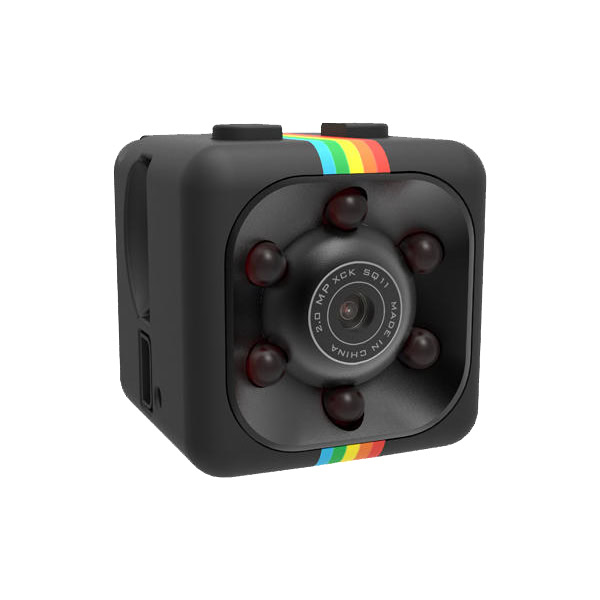
Integrating motion detection cameras into your school’s security system is typically smoother and less disruptive compared to other technologies. This ease of integration can be attributed to better technology compatibility and simplified user training. You’ll find that motion detection cameras often use existing network infrastructure, which means you don’t have to invest in a lot of new hardware or undergo extensive installations.
Here’s how motion detection cameras stack up against other security systems in terms of integration:
| Feature | Motion Detection Cameras | Other Security Systems |
|---|---|---|
| Technology Compatibility | High | Variable |
| Installation Complexity | Low | High |
| User Training Requirement | Minimal | Extensive |
You’ll appreciate that the user training for motion detection cameras is generally straightforward. Most staff members can learn the basics quickly, which is not always the case with more complex systems. This simplicity helps in reducing the downtime and interruptions in daily school operations, making it a preferred choice for many educational institutions. Remember, effective security doesn’t have to be complicated. Motion detection cameras prove that a simpler approach can often lead to better overall integration and functionality.
In comparison to other security systems, motion detection cameras stand out for their swift response times. You’ll find that these cameras not only detect motion quickly but also initiate alerts faster than many alternative systems. This capability is crucial in a school setting where seconds can make a significant difference in ensuring safety.
When you’re considering the response time metrics, here’s what you need to know about motion detection cameras compared to other security technologies:
These points illustrate why motion detection cameras are a superior choice for maintaining a secure and responsive environment in schools. You’re not just getting a camera; you’re enhancing your school’s security posture with fast, reliable technology.
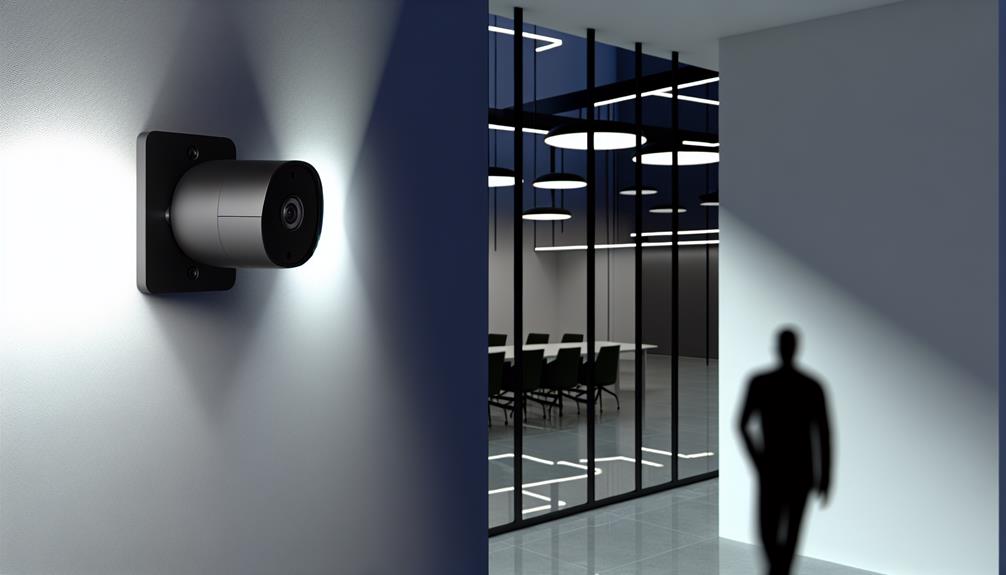
While implementing motion detection cameras in schools can enhance security, it’s crucial to navigate the legal implications and privacy concerns that accompany such technology. You need to be aware of surveillance ethics and the importance of data protection.
Every state has varying laws regarding surveillance in public places, especially in sensitive areas like schools. You must ensure that the installation of these cameras doesn’t violate any local or federal privacy laws.
It’s vital to consider the impact on the students’ and staff’s perception of privacy. Transparent communication about what the cameras monitor and why is essential. You’re responsible for maintaining a balance between safeguarding physical security and respecting individual privacy rights.
Moreover, the data collected by these cameras must be strictly managed. Who’s access to this data, how long it’s stored, and the measures to protect it from misuse are critical aspects you can’t overlook.
Make sure all data handling complies with relevant data protection laws to avoid legal issues that could arise from mishandling personal information.
Exploring successful implementations of motion detection cameras in schools reveals a range of benefits and strategic insights. Through real world applications, you can see how these technologies not only enhance security but also foster a safer learning environment.
One noteworthy example is a high school in Texas, where the integration of motion detection cameras led to a significant reduction in vandalism and unauthorized access after hours. User testimonials from the school’s security staff highlight the cameras’ effectiveness in deterring potential mischief and ensuring student safety.
Here’s what you can learn from their success:
These implementations show how motion detection cameras can be a vital part of a school’s security strategy, giving peace of mind to both educators and parents alike.
To keep your school’s motion detection cameras functioning optimally, regular maintenance is crucial. You’ve got to keep on top of routine checks and consider equipment upgrades when needed. This isn’t just about ensuring security but also about maximizing the technology’s lifespan and efficiency.
Firstly, you should establish a monthly schedule to inspect cameras for physical damages like wear and tear or environmental impacts. It’s also essential to check the camera lenses for cleanliness. Dust and smudges can seriously degrade the image quality, making your security efforts less effective.
Secondly, updating the camera’s firmware is a must-do. Manufacturers often release updates that enhance functionality and patch security vulnerabilities. Neglecting this step could leave your system open to risks.
Lastly, here’s a simple table to help you keep track of essential maintenance tasks:
| Task | Frequency |
|---|---|
| Lens Cleaning | Monthly |
| Firmware Updates | As released |
| Physical Inspections | Monthly |
School surveillance technology is rapidly evolving, and the future promises even more sophisticated systems. As you navigate the world of safety for students, it’s crucial to stay informed about the capabilities of emerging technologies and smart analytics. These advancements aren’t just enhancing security but are also transforming how schools manage and interpret surveillance data.
Here’s what you can expect in the near future:
These trends are poised to significantly alter how you ensure safety and handle incidents, making your role in school security both easier and more effective.
Keep an eye on these developments to stay ahead in providing a secure educational environment.
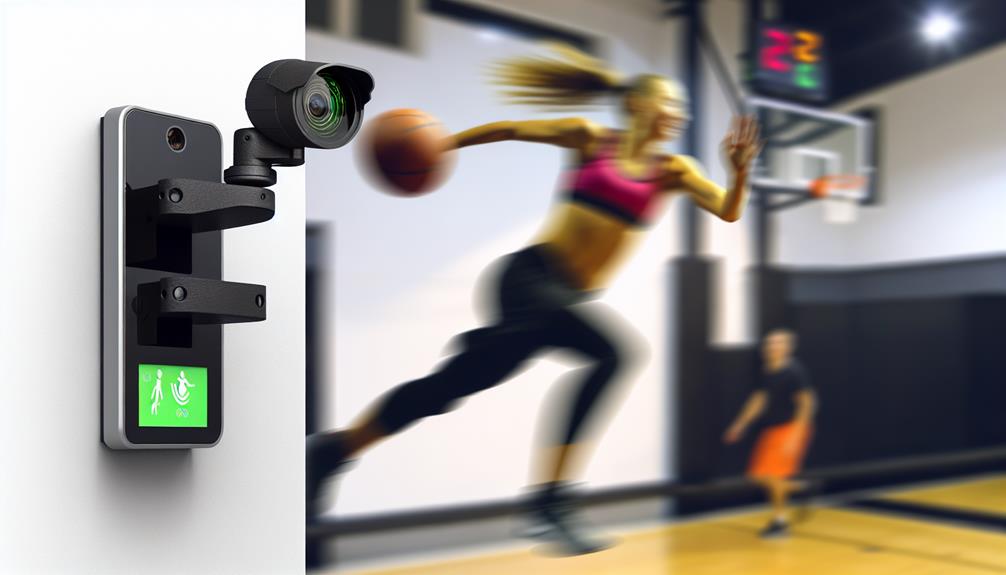
You’re looking at an average cost of around $100 to $400 for a motion detection camera, depending on the camera features and installation costs.
Higher-end models with advanced features like high-resolution imaging and extensive storage can push prices higher.
Remember, installation complexity and additional components like servers or cloud storage solutions can also affect your final cost.
It’s wise to compare different brands and models to find the best fit for your needs.
You might wonder if these devices can be easily disabled.
Generally, camera technology is designed to be tamper-proof to enhance security and deter misconduct. Manufacturers are aware of concerns like student privacy and typically integrate features that minimize the chances of unauthorized access or disablement.
This means you’d likely find it quite challenging to manipulate or turn off these cameras without specific technical skills or access rights.
When considering how monitoring systems influence your behavior at school, think about student accountability and behavioral monitoring.
The presence of these systems might make you more mindful of your actions, knowing you’re being watched. This could lead to better adherence to school rules and a decrease in misconduct.
Essentially, it’s about creating an environment where everyone feels responsible and safe, encouraging you to focus more on your studies and school activities.
Yes, there are grants available for purchasing security equipment.
You can find various funding sources that offer financial support. Start by searching federal and state education grants, and don’t overlook private foundations and corporate sponsorship possibilities.
To increase your chances, ensure your grant application is detailed, emphasizing the need and benefits of the equipment.
It’s also helpful to highlight how this investment will enhance safety and security measures.
When a power outage occurs, essential systems with power backup continue to function.
It’s crucial to ensure that your power backup system is reliable and tested regularly. These security measures are designed to provide continuity during unexpected power failures, keeping critical operations running smoothly.
Regular maintenance checks are advisable to confirm everything will perform as expected during an outage, ensuring you’re not left vulnerable when you need protection the most.
You’ve seen how motion detection cameras can significantly boost security at schools. They’re not just tools for monitoring but vital in proactively preventing incidents. With straightforward installation and maintenance, integrating these cameras into your existing security system is cost-effective and provides lasting benefits. Always consider the legal aspects to respect privacy while enhancing safety. As technology evolves, staying updated with the latest advancements will ensure your school remains a secure environment for everyone to learn and grow.
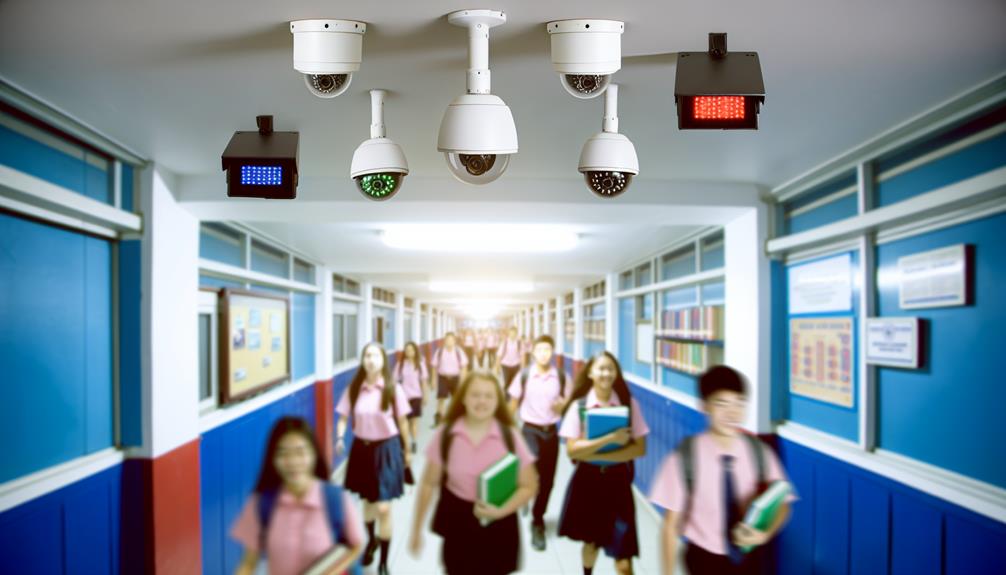
Brainstorm Security Shop
1867 Caravan Trail
Ste 105
Jacksonville, FL 32216
Call us toll free: (800) 859-5566